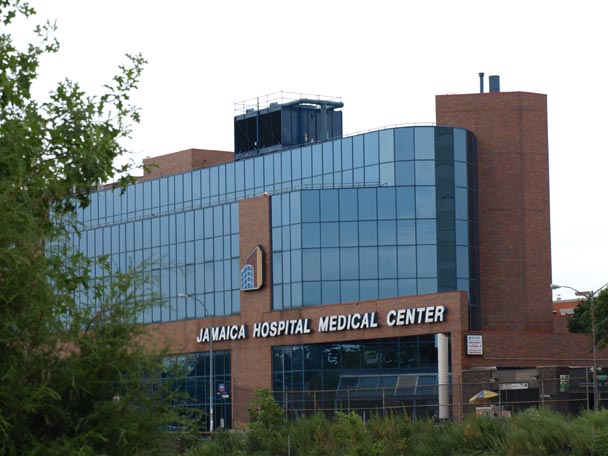Several local hospitals received low marks in safety ratings, according to a recent survey released by Consumer Reports.
A nationwide magazine that rates and reviews consumer products and services, Consumer Reports releases a survey with data on over 4,000 hospitals nationwide each year. The survey—which grades hospitals on safety ratings in four areas: hospital infections, readmissions, discharge and medical instructions—collected data on 98 total hospitals in the New York City area and ranked 81 of them.
Of the hospitals ranked, two Queens hospitals, Jamaica Hospital Medical Center and Forest Hills Hospital, finished among the ten worst hospitals in the New York area for those safety measures, with Jamaica ranking ninth and Forest Hills ranking third. St. Johns Episcopal Hospital-South Shore in the Rockaways was ranked 19th.
Both Jamaica and Forest Hills hospitals received poor marks in all four areas. St. John’s performed poorly in readmissions and both communications categories, the survey reported.
The embattled Peninsula Hospital in the Rockaways, where the state recently ordered a partial shutdown of operations due to health concerns in the hospital lab, was not ranked, nor were the city-owned Queens Hospital Center or Elmhurst Hospital, as there was insufficient data on some of the categories. However, all three hospitals received poor grades among several of the rated safety measures.
Peninsula Hospital, while receiving high marks under keeping infections to a minimum, received low marks in communications regarding discharge and medications while readmission data was missing.
A statement released from Peninsula Hospital referenced receiving good scores under the infection category in 2011, noting that the hospital made a “concentrated effort” to cut down on infections by initiating new standards of practice in critical care for central line bloodstreams. The hospital also praised their nursing staff for their role in controlling infections.
“Regarding any of the lower scores, once again, the Hospital Center has made significant improvements in those areas by the time the data was reported,” stated Liz Sulik, director of External Affairs for Peninsula Hospital.
City-run Elmhurst Hospital received low marks in readmissions and communications on medication. Queens Hospital Center, also run by the city, did poorly under infections, and communications on both medications and discharge. The city’s Health and Hospitals Corporation, which runs both hospitals, did not returns requests for comment by press time.
Officials with MediSys Health Network, which runs Jamaica Hospital, asked to comment, released a brief statement regarding the study.
“We have instituted a number of programs in order to continue to improve all aspects of our clinical care and service, and they were ongoing prior to this report,” stated Ole W. Pedersen, vice president of Emergency Medicine and Public Affairs for MediSys.
Medisys also referred to a statement from the Greater New York Hospital Association (GNYHA), a trade association made up of more than 250 hospitals in the tri-state area and Rhode Island. GNYHA claimed that the survey did not accurately reflect either the level of care or the number of successful patient safety programs within New York City hospitals.
The statement, issued by GNYHA President Kenneth Raske, also called the survey ‘misleading’ regarding its report that New York City hospitals have higher hospital-acquired infection ratings than other hospitals nationwide.
“[The report] likely reflects that New York State simply has a more comprehensive [infection] reporting system than most states,” Raske stated, while adding that GNYHA was pursuing a meeting with Consumer Reports’ Health Ratings Center to discuss the methodology and accuracy of the report.
Survey ratings are created from scientifically based data on patient experience and outcomes gathered from public sources, according to Consumer Reports website. The data on hospital infections is based on data that hospitals submit to the state on central line bloodstream infections and surgical site infections—the two most common and deadly hospital-acquired infections.
The ratings for readmissions is based on billing data analyzed by the US federal agency known as the Centers for Medicare and Medicaid Systems (CMMS), and it reflects the likelihood that a patient hospitalized due to heart attack, heart failure or pneumonia will have to be readmitted to a hospital within 30 days of their discharge.
Meanwhile, the ratings for discharge and medical instructions are based on a survey that hospitals are required to ask patients and report to CMMS.
Responding to the low marks they received on the survey, officials at Forest Hills Hospital, which is run by North Shore-LIJ Health System, released a statement Wednesday which stated that the hospital was aware of the issue and was “working aggressively” to resolve it.
Additionally, the hospital pointed out that its infection rates, reported to the state from 2008 through 2010, illustrated that their infection rates were actually lower than the state average for other New York hospitals.
“In the past two years (2010-2011), those numbers have shown significant, steady improvement — to the point that the hospital’s performance is now better than the state average,” the statement read, adding that “…despite the increased influx of patients due to the closure of several hospitals in the Queens area, our most recent data shows that Forest Hills has experienced significant improvement in all quality metrics. We are confident that this will be reflected in the results of the next reporting period.”
By Jean-Paul Salamanca
jp.salamanca@theforumnewsgroup.com

